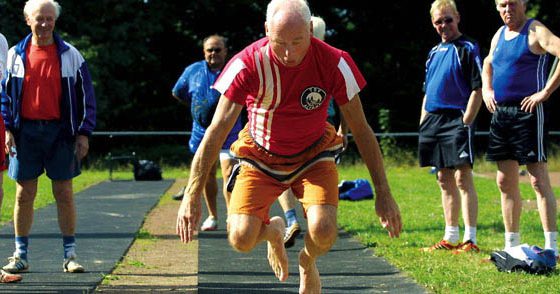In sports terms, aging can be described as the sum of all biological, psychological, and social changes that lead to a gradual decline in the individual’s psychophysical ability to adapt and perform after reaching adulthood and exceeding peak performance age.
Aging processes in the musculoskeletal system, but also in the internal organs such as the heart, lungs, circulatory system and brain begin as early as age 30, so they are not just a problem of the older generation. Therefore, as mortality shifts upward, i.e., as people reach older ages, maintaining mobility, fitness, and mental freshness becomes important. Especially since it is known that the “peak bone mass”, i.e. the maximum muscle and bone mass is reached when the patient reaches the age of 30, i.e. at the age of peak athletic performance.
Maintaining this maximum size and keeping it for as long as possible into old age is an increasingly important component of life planning, all the more so since today’s findings show that even at an advanced age it is possible to maintain and even increase muscle mass through regular training and that older people react to physical stimuli in exactly the same way as healthy young people (quantitative stimuli).
It is true that the range of adaptation in the elderly decreases and the stress limit is significantly reduced in old age. Nevertheless, it is never too late to start targeted training. Not only muscle mass, but according to recent studies, mental fitness and brain functions can be improved and maintained for years with appropriate training, especially physical activity training.
The following two articles are intended to support these theses and provide evidence based on relevant studies and recent findings. Further studies are needed to explore and prove the maintenance of fitness and health in old age and to support appropriate efforts.
Gerda Hajnos-Baumgartner, M.D.
HAUSARZT PRAXIS 2013; 8 (10): 12











